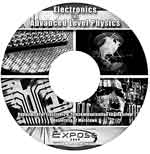|
|
||||
|
Bridging the IT gap in rural schools Imagine teaching in a rural school, where the examination syllabus was fine as far as the theory went but there was a problem when it came to the practical side, plus those add-ons that help breach the gap between school and university. What do you do?Well, to begin with, when mentioning practicals it tends to lean to the sciences, and in this case it’s physics. The University of Moratuwa, Department of Electronics and Telecommunications Engineering, has come up with a CD to cover the gaps left by aspects of basic electronics in the physics curriculum, with the Ministry of Education’s backing. The four fields covered in basic electronics are diodes, transformers, operational amplifiers and digital electronics.
Kulendra Janaka, CD project coordinator for this year’s project a “Guide to A-Level Physics”, said there was a lack of practical facilities and staff in rural areas who were clear on applying that practical side. To re-address this, the department has been conducting workshops with inner city schools over the last couple of years, as well as holding expositions to show off the department’s latest educational aids when it comes to helping rural schools breach the ICT divide. The initial encouragement came from Prof. I. J. Dayawansa, who was keen to promote the use of ICT in rural areas, and who also was the person behind setting up the department at the university. One of the problems was that in rural areas the theory stopped when the teacher did, as there was a lack of resources, no to mention teachers on the subject. There was also a problem bridging the gap between A- and university levels, hence the development of the disc to try to alleviate these matters. As an example for the need to bridge the gap, Mr. Dayawansa said: “People know about a UBS flash, but when it comes to talking about going to the next level, teachers in rural schools are out of the loop when it came to, say, UBS flash hard drives, meaning students would be at a disadvantage when starting lectures at university.” The disc is a continuation of a more low-key one last year, where it stayed basically with practicals. One important discovery was the need to use all three languages spoken in Sri Lanka, and that there is a very prevalent reason for this. “For around 90 percent of students, even though they study English, they still have to translate physics to their first language, be it Sinhalese or Tamil.” Other than the four aspects of electronics, the disc also offers an insight into micro controllers, the addition of extra designer software onto microchips. Again allowing students to get a grasp of what is coming next when the subject is taken to a higher level. Another useful addition on the CD is test papers, again covering the three languages. “There is a problem with getting access to enough test papers, so we included them to help these students have a better understanding and chance to pass the exams,” the coordinator said. The disc runs like a website, where the relevant icon is clicked on to get the text and video practical; once over the main menu is returned to. And the finishing date? “In the next week or two as there are a few bugs to be sorted out,” Mr. Janaka said. (RI)
|
||||
Copyright © 2006 Wijeya Newspapers
Ltd. All rights reserved. |
